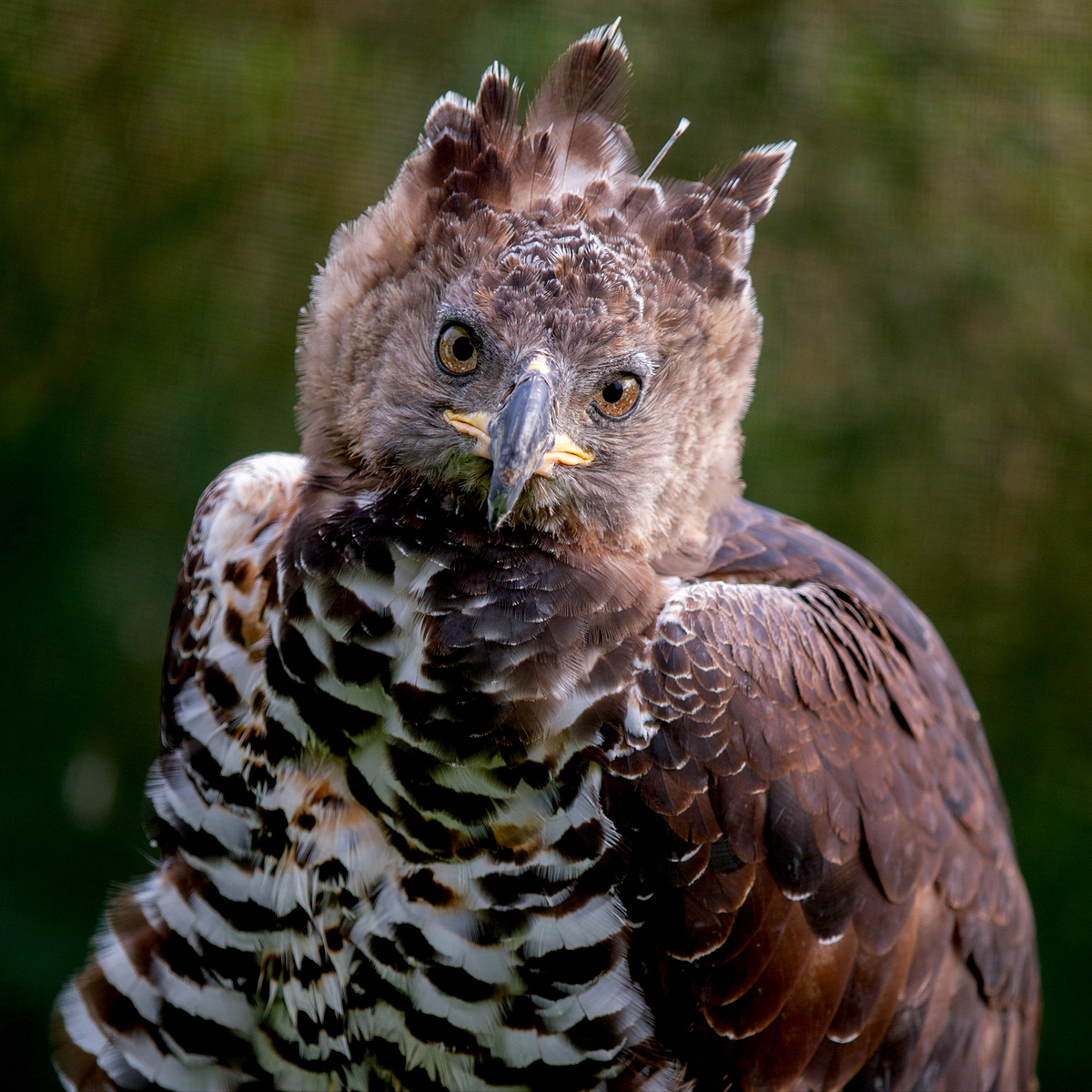- Home
- Conservancy
- Crowned Eagle
Description
The crowned eagle, also known as the African crowned eagle or the crowned hawk-eagle (Stephanoaetus coronatus) is a large bird of prey found in sub-Saharan Africa; in Southern Africa it is restricted to eastern areas. Its preferred habitats are principally riparian woodlands and various forests. The crowned eagle is the only extant member of the genus Stephanoaetus. A second species, the Malagasy crowned eagle (Stephanoaetus mahery) became extinct after humans settled on Madagascar.
At least 90 per cent of the diet is mammalian, the usual prey taken by populations shows pronounced regional differences. Throughout its range the principal prey items are small ungulates (such as duikers, chevrotains), rock hyrax and small primates such as monkeys. Birds and large lizards are barely taken. Although the crowned eagle's long tail imparts an overall length up to 90 cm (35 in), it is somewhat less massive and has a considerably shorter wingspan than Africa's largest eagle, the martial eagle (Polemaetus bellicosus). It is nevertheless considered Africa's most powerful eagle when measured in terms of the weight of its prey items.
Fun Facts
Typical of most raptors that breed in Africa, the crowned eagle is non-migratory and is largely sedentary. This species usually inhabits a fixed territory throughout the year its adult life. Small movements by crowned eagles has resulted in them being sighted in improbable habitats, such as on an open savanna hill in Kenya, an open river bed in Lewa Wildlife Conservancy and even a golf course in Nairobi.
The crowned eagle is highly vocal and has a noisy, undulating display flight. In Equatorial Africa, they often call year-around, while elsewhere they may vocalize mainly in the context of breeding and nesting activities. The voice is a series of loud whistles that rise and fall in pitch. The male performs an elaborate rise-and-fall display over the forest canopy both during the breeding season and outside it as a territorial proposition.
Usually, territorial displays, which outnumber breeding displays, occur around the periphery of the bird's home range while breeding displays are likely to be over or at least near the nest.v Displays consists of a series of steep dives and ascents, with a few wing-flaps at the top of each climb and descending circles and figures of eight. During descents, eagles can drop as much as 60 m (200 ft) at a time before circling back up. During this display, the male is noisy, uttering a shrill kewee-kewee-kewee while throwing his head back, often calling for a spell of approximately 30 seconds.
The displaying male may reach heights exceeding 900 m (3,000 ft), sometimes even near cloud level at over 2,000 m (6,600 ft) above the ground. The adult female may also perform independent display flights, uttering a lower kooee-kooee-kooee. The female seems to display less often and tends to have a mellower voice. Pairs also perform visually striking mutual displays, sometimes arising from the first type or when the pairs come together after a brief absence. Spectacular tandems, interlocking talons and falling some distance from the sky are typical of mutual displays.
Despite the spectacular and conspicuous nature of their display flights, the crowned eagle is sometime considered a "clumsy" flier out in the open, lacking the grace and speed attributed to a few other eagles in a high-flying context, such as large Aquila species. While awaiting food at the nest, both the female and the young call out a penetrating, high kwee-kwee-kwee, that can border on incessant.
